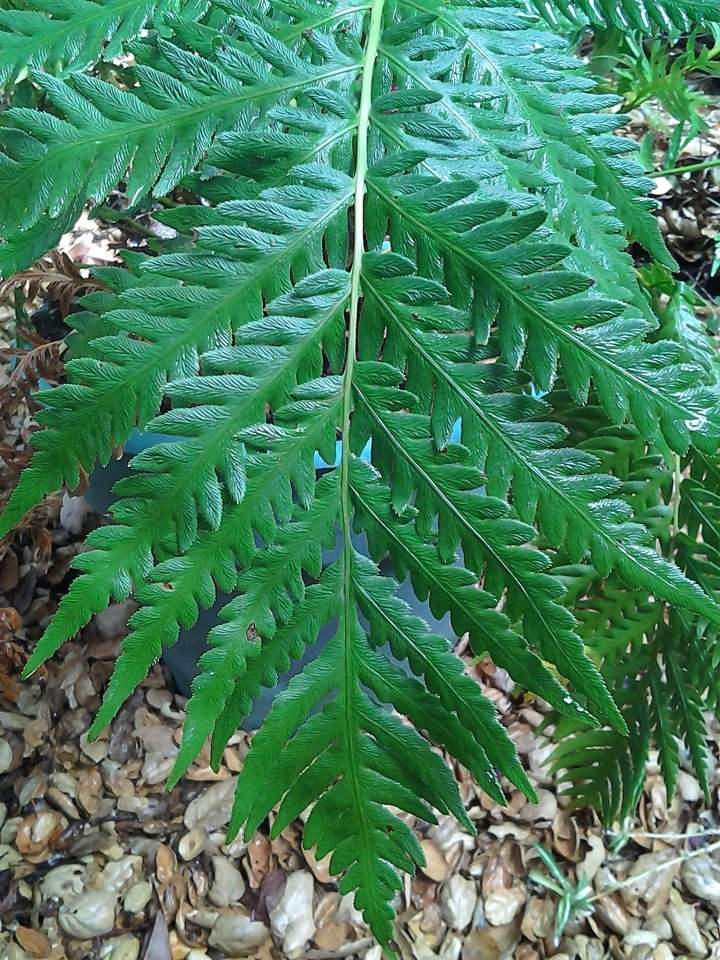 Many of the most popular plants are expected to bloom to add color and fragrance to the garden. Many others are grown to produce fruit or vegetables. Some are appreciated for their foliar color in autumn. Big trees are grown for shade. Turf grasses are grown as lawn. Evergreen shrubbery makes hedges. It seems that all plants perform particular tasks in the gardens which they inhabit.
Many of the most popular plants are expected to bloom to add color and fragrance to the garden. Many others are grown to produce fruit or vegetables. Some are appreciated for their foliar color in autumn. Big trees are grown for shade. Turf grasses are grown as lawn. Evergreen shrubbery makes hedges. It seems that all plants perform particular tasks in the gardens which they inhabit.
Ferns only need to provide rich foliage. They do so very efficiently, with remarkably stylish and distinctive textures, and deep green color. Most ferns are evergreen, so only need to be groomed of their old foliage as it gets replaced by new foliage. Most of the few deciduous ferns are bare only briefly during their respective dormant seasons. Some can grow wild without any grooming at all.
Many ferns are famously tolerant of partial shade that is too dark for many other types of plants. Many are tolerant of confinement, so are happy in pots, planters and small atriums, or under stairs. Some ferns that are tolerant of both shade and confinement are popular as houseplants. Those that get too big or their situations are generally easy to dig and relocate, or divide into more plants.
There are only two species of tree fern that are common here; the Australian tree fern, and the New Zealand tree fern. Australian tree fern is taller with leaner trunks. Tasmanian tree fern is short and stout. These and more rare tree ferns are the only ferns that leave the ground as they develop ‘trunks’ of tightly bundled fibrous roots dispersed through the decayed remains of their rhizomes.
Their rhizomes are just their thick herbaceous stems. Those of tree ferns do not branch into more than a single terminal bud, so can not be divided. Rhizomes of most other ferns split into clumps of a few or many individual budded rhizomes, which can be divided if they get too crowded. Leaves that grow from the rhizomes are known as fronds. The fronds of almost all ferns are divided into smaller leaflets known as pinnae, which are suspended by leafstalks known as rachi.
I love ferns too. I’ve never tried propagating them though.
LikeLiked by 1 person
I will propagate just about anything, but have never bothered to grow ferns from spores. I have only split them by division, or grown pups that appear on the foliage of mother fern. I do not have the patience to give them what they need while they grow. Besides, there are more than enough of the ferns that grow wild around here. When some get in our way, it is not so easy to find a place in the landscape that we want to move them to.
LikeLike
And there are xeric ferns! I was astonished the first time I found some growing in limestone rock in the Texas hill country. In deep east Texas, there are native ferns intermixed with pine trees. That was another surprise. They’re wonderful plants.
LikeLiked by 1 person
The Western sword fern, which I will be writing about today for next week, is remarkably resilient to dry summers. I would not describe it as xeric, but it grows wild in more sheltered spots in our chaparral climate. The native maidenhair fern is riparian, but can defoliate and go dormant through summer.
LikeLike
I have quite a few ferns in my landscape and some that I didn’t even plant. Mine are green all year.
LikeLiked by 1 person
Those are the best. You know the are happy there if they already grow wild.
LikeLiked by 1 person
I love a good fern! We have just bought a few as we cleared some ground in the front garden and it’s a little shady, so we thought ferns would suit. Sometimes the Victorians would have a fernery in their gardens – a whole border devoted to ferns – I think we should bring that back!
LikeLiked by 1 person
Nowadays, people expect too much color. Borders of ferns are seen only in riparian situations in the wild.
LikeLike
ours are not evergreen here in Canada, die back every year, but come out every spring lush and green. They do provide great foliage interest in amongst the flowering plants. I have even used some fronds in wedding bouquets and arrangements.
LikeLiked by 1 person
They would need to be deciduous there. Some of our natives die back if they get too dry in the summer, but it is no problem. They regenerate in the autumn. Many exotic ferns can die if the get too dry, or if the get frosted. If Australian tree fern dies back because of frost, it will not recover.
LikeLiked by 1 person
Love ferns and have several types, none of them were planted by me! My favorite free plants and they are all evergreens.
LikeLiked by 1 person
I suppose that the natives would be there (and perhaps naturalized exotics as well). Someone else mentioned that the ferns in her garden in Canada are all deciduous because of the winters there.
LikeLiked by 1 person